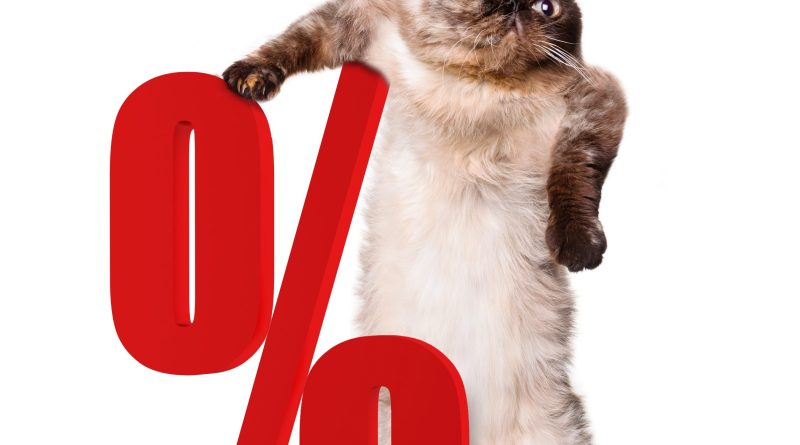What Is Guaranteed about the Guaranteed Analysis?
- The guaranteed analysis is only required to provide information on four nutrients – protein, fat, fiber, and moisture (water). Information on other nutrients can be included but is not required.
- More importantly, the guaranteed analysis doesn’t give us the actual percentages of these four nutrients in the food; instead, they are listed as minimum levels (for protein and fat) or maximum levels (for fiber and moisture). There can be a lot of variation between these minimum, or maximum, values and the actual amount of that nutrient in the food. Let’s say the guaranteed analysis on your dog’s dry food says 24% protein (minimum); it could be 24%, but it also might contain a larger percentage, say, 26% or 32%. To get more accurate information, call the manufacturer and ask for the “average” or “typical” nutrient percentages (or, even better, per 100 or 1000 kilocalories – see below; note that 1 kilocalorie for pet food is equivalent to one human calorie).
- Even if the guaranteed analysis gave exact percentages, rather than just minimums and maximums, these numbers don’t help us to compare nutrients in pet foods because the guaranteed analysis numbers are on what’s called an “as-fed” basis, meaning they include all the water in the diet, which varies widely between dry, canned, and other forms of pet foods. A slightly better way to compare pet foods is on a “dry matter” basis, which is the nutrient levels without including the water in the food. Pet foods vary widely in their water content; most canned food contains about 80% water and dry food is only about 10% water. That means that if you’re comparing a dry food with a protein level of 33% from the guaranteed analysis to a canned food with a 8% protein level from the guaranteed analysis, the canned food seems much lower in protein. However, the protein levels are almost identical (at about 36%) when compared on a dry matter basis!
You can convert the “as fed” percentages from the guaranteed analysis to dry matter percentages fairly easily (see our Nutrition Math 101 post), but it still doesn’t account for the lack of an exact value noted above or the issue of calories (see #4).
- The best way to compare nutrients between pet foods is to compare them on a calorie basis. Instead of messing around with percentages – whether “dry matter” or “as fed” – nutritionists compare foods using grams of that nutrient per 100 or 1000 kilocalories. This is the most accurate comparison because it adjusts for the variable kilocalories (kcals) in pet foods. Dry cat foods, for example, can range from less than 300 kcals per cup to more than 600 kcals per cup! This not only affects the volume of food that the cat would eat (for a typical 10 pound cat, about 1 cup per day of the low kcal food and about 1/3 cup per day of the high kcal food), but also affects how much of other nutrients they’ll ingest, such as protein, vitamins, and minerals. So, comparing nutrients per 100 or 1000 kcals is the best way to compare foods, but the guaranteed analysis isn’t written in these terms.
So, if you want to compare nutrients in different pet foods most accurately, we recommend basing the comparison on grams per 100 or 1000 kcals. Our Petfoodology website has a calculator to help you make the conversions if the manufacturer can’t give you this information.
- Finally, even without all the other important limitations mentioned above, the guaranteed analysis relies on the manufacturers’ nutritional expertise and quality control measures. In the United States, if the manufacturer states that the diet has a minimum fat level of 4% or a minimum protein level of 50%, there is usually no one double-checking this information. In fact, we analyzed 90 canned cat foods that all stated they were nutritionally complete and balanced (which means they should have at least the minimum levels of all essential nutrients).* We measured just one nutrient (thiamine or vitamin B1) and found that 13% of the diets were below the Association of American Feed Control Officials (AAFCO) minimums for thiamine. While thiamine isn’t part of the guaranteed analysis, it does emphasize the importance of selecting diets from manufacturers with strong nutritional expertise and rigorous quality control measures.
You probably didn’t think there could be so many problems with just 4 simple numbers on a pet food label! However, I hope this illustrates that not much is guaranteed about the label’s guaranteed analysis, and that it’s fairly useless as a way to compare pet foods or judge the nutrient levels of an individual food. Instead, we recommend asking our “Questions You Should be Asking about your Pet’s Food” to help you select a nutritious and high quality pet food. If your pet needs adjusted levels of certain nutrients, you should call the manufacturer to get average or typical values per 100 or 1000 kcals (and if they can’t or won’t give you that information, it should be a red flag). If your pet needs nutritional adjustments for medical issues, be sure to talk to your veterinarian about the best diet or, for more complicated situations, you can work with a Board Certified Veterinary Nutritionist®.
*Markovich JE, Freeman LM, Heinze CR. Analysis of thiamine concentrations in commercial canned foods formulated for cats. J Am Vet Med Assoc 2014;244:175-179.

